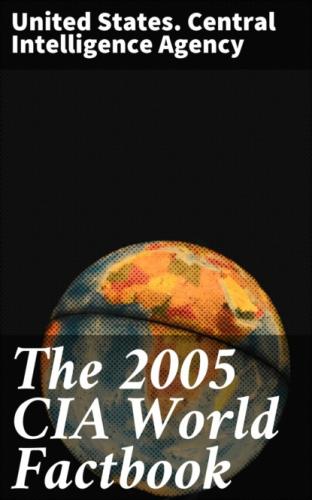Legal system:
the Constitution codifies Islamic principles of government
Suffrage:
15 years of age; universal
Executive branch:
chief of state: Supreme Leader Ayatollah Ali Hoseini-KHAMENEI
(since 4 June 1989)
head of government: President Mahmud AHMADI-NEJAD (since 3 August
2005) First Vice President Dr. Mohammad Reza AREF-Yazdi (since 26
August 2001)
cabinet: Council of Ministers selected by the president with
legislative approval; the Supreme Leader has some control over
appointments to the more sensitive ministries
elections: leader of the Islamic Revolution appointed for life by
the Assembly of Experts; president elected by popular vote for a
four-year term; election last held 17 June 2005 with a two-candidate
runoff on 24 June 2005 (next to be held NA 2009)
election results: Mahmud AHMADI-NEJAD elected president; percent of
vote - Mahmud AHMADI-NEJAD 62%, Ali Akbar Hashemi RAFSANJANI 36%;
note - 2% of ballots spoiled
Legislative branch:
unicameral Islamic Consultative Assembly or
Majles-e-Shura-ye-Eslami (290 seats, note - changed from 270 seats
with the 18 February 2000 election; members elected by popular vote
to serve four-year terms)
elections: last held 20 February 2004 with a runoff held 7 May 2004
(next to be held February 2008)
election results: percent of vote - NA%; seats by party -
conservatives/Islamists 190, reformers 50, independents 43,
religious minorities 5, and 2 seats unaccounted for
Judicial branch:
Supreme Court - above a special clerical court, a revolutionary
court, and a special administrative court
Political parties and leaders:
formal political parties are a relatively new phenomenon in Iran
and most conservatives still prefer to work through political
pressure groups rather than parties; a loose pro-reform coalition
called the 2nd Khordad front, which includes political parties as
well as less formal pressure groups and organizations, achieved
considerable success at elections to the sixth Majles in early 2000;
groups in the coalition include: Islamic Iran Participation Front
(IIPF); Executives of Construction Party (Kargozaran); Solidarity
Party; Islamic Labor Party; Mardom Salari; Mojahedin of the Islamic
Revolution Organization (MIRO); and Militant Clerics Society
(Ruhaniyun); the coalition participated in the seventh Majles
elections in early 2004; a new apparently conservative group, the
Builders of Islamic Iran, took a leading position in the new Majles
after winning a majority of the seats in February 2004
Political pressure groups and leaders: political pressure groups conduct most of Iran's political activities; groups that generally support the Islamic Republic include Ansar-e Hizballah, Muslim Students Following the Line of the Imam, Tehran Militant Clergy Association (Ruhaniyat), Islamic Coalition Party (Motalefeh), and Islamic Engineers Society; active pro-reform student groups include the Organization for Strengthening Unity; opposition groups include Freedom Movement of Iran, the National Front, Marz-e Por Gohar, and various ethnic and Monarchist organizations; armed political groups that have been almost completely repressed by the government include Mujahidin-e Khalq Organization (MEK), People's Fedayeen, Democratic Party of Iranian Kurdistan, and Komala
International organization participation:
CP, ECO, FAO, G-24, G-77, IAEA, IBRD, ICAO, ICC, ICCt (signatory),
ICRM, IDA, IDB, IFAD, IFC, IFRCS, IHO, ILO, IMF, IMO, Interpol, IOC,
IOM, ISO, ITU, MIGA, NAM, OIC, OPCW, OPEC, PCA, UN, UNCTAD, UNESCO,
UNHCR, UNIDO, UNMEE, UPU, WCL, WCO, WFTU, WHO, WIPO, WMO, WToO
Diplomatic representation in the US:
none; note - Iran has an Interests Section in the Pakistani
Embassy; address: Iranian Interests Section, Pakistani Embassy, 2209
Wisconsin Avenue NW, Washington, DC 20007; telephone: [1] (202)
965–4990; FAX [1] (202) 965–1073
Diplomatic representation from the US:
none; note - protecting power in Iran is Switzerland
Flag description:
three equal horizontal bands of green (top), white, and red; the
national emblem (a stylized representation of the word Allah in the
shape of a tulip, a symbol of martyrdom) in red is centered in the
white band; ALLAH AKBAR (God is Great) in white Arabic script is
repeated 11 times along the bottom edge of the green band and 11
times along the top edge of the red band
Economy Iran
Economy - overview:
Iran's economy is marked by a bloated, inefficient state sector,
over reliance on the oil sector, and statist policies that create
major distortions throughout. Most economic activity is controlled
by the state. Private sector activity is typically small-scale -
workshops, farming, and services. President KHATAMI has continued to
follow the market reform plans of former President RAFSANJANI, with
limited progress. Relatively high oil prices in recent years have
enabled Iran to amass some $30 billion in foreign exchange reserves,
but have not eased economic hardships such as high unemployment and
inflation. The proportion of the economy devoted to the development
of weapons of mass destruction remains a contentious issue with
leading Western nations.
GDP (purchasing power parity):
$516.7 billion (2004 est.)
GDP - real growth rate:
6.3% (2004 est.)
GDP - per capita:
purchasing power parity - $7,700 (2004 est.)
GDP - composition by sector: agriculture: 11.2% industry: 40.9% services: 48.7% (2004 est.)
Labor force: 23 million note: shortage of skilled labor (2004 est.)
Labor force - by occupation:
agriculture 30%, industry 25%, services 45% (2001 est.)
Unemployment rate:
11.2% (2004 est.)
Population below poverty line:
40% (2002 est.)
Household income or consumption by percentage share:
lowest 10%:
